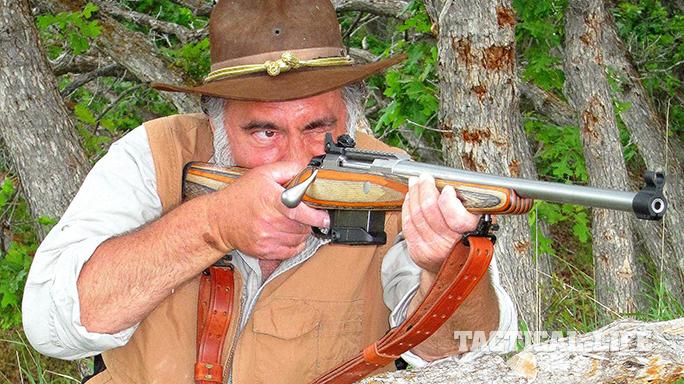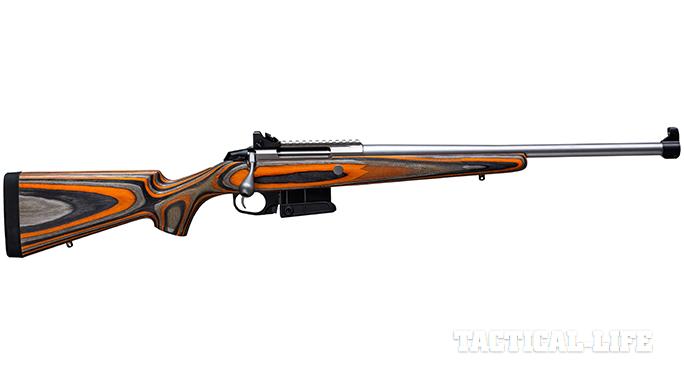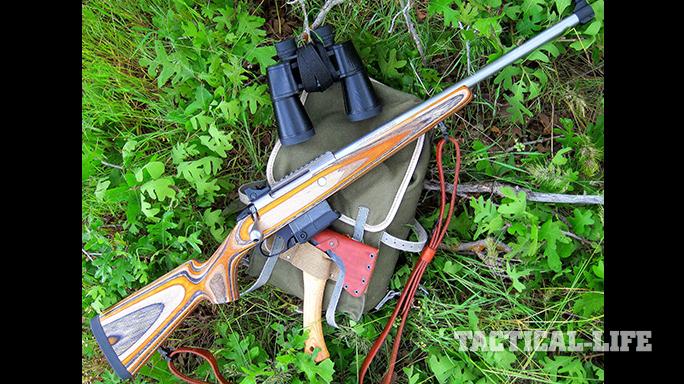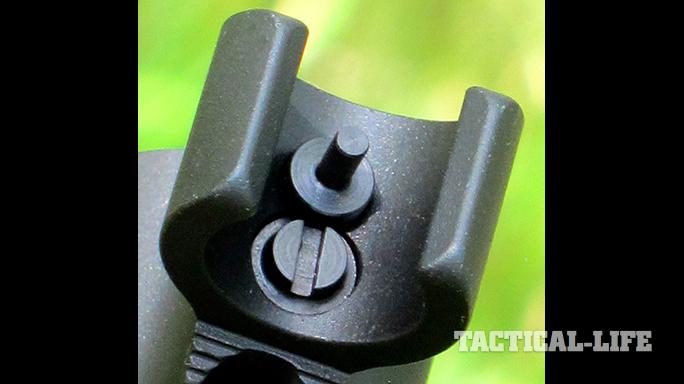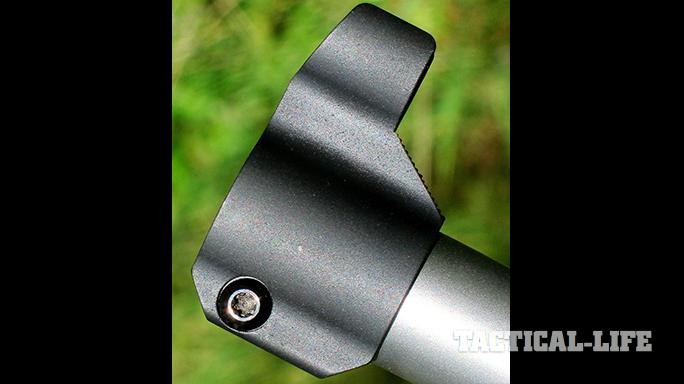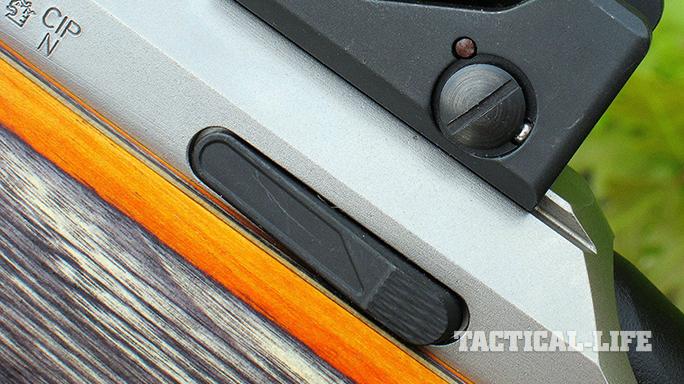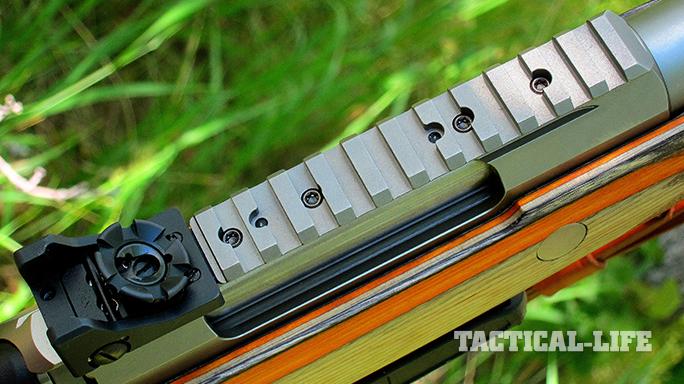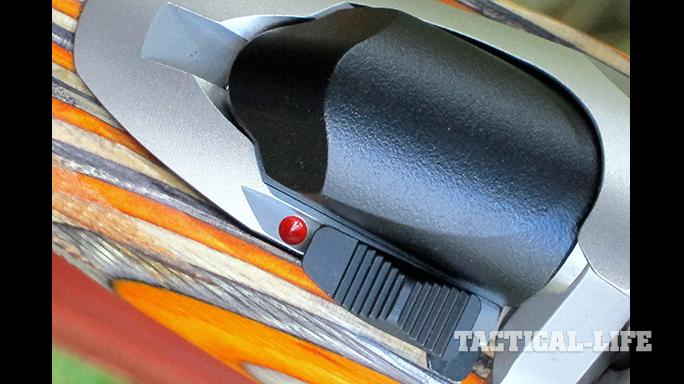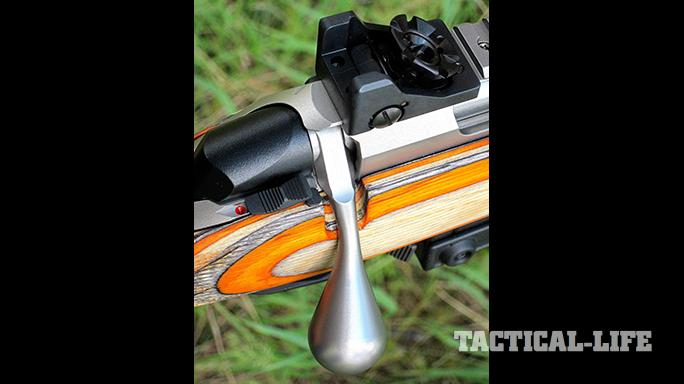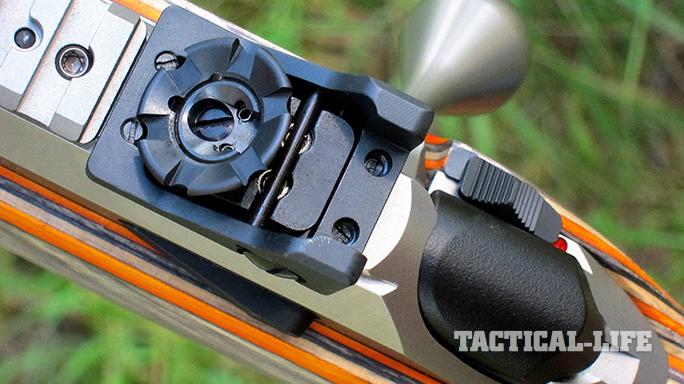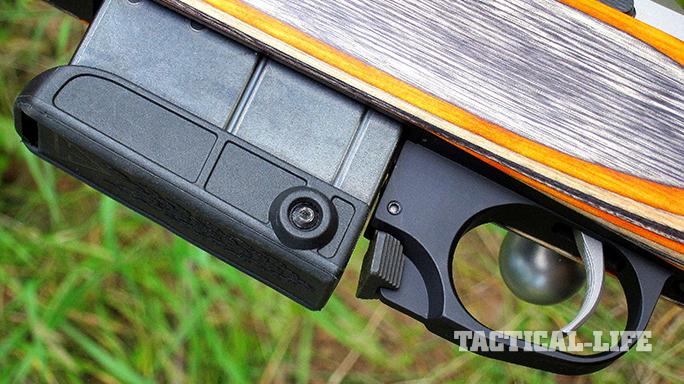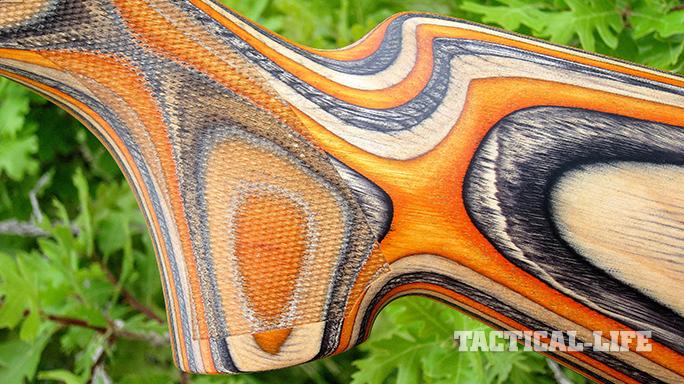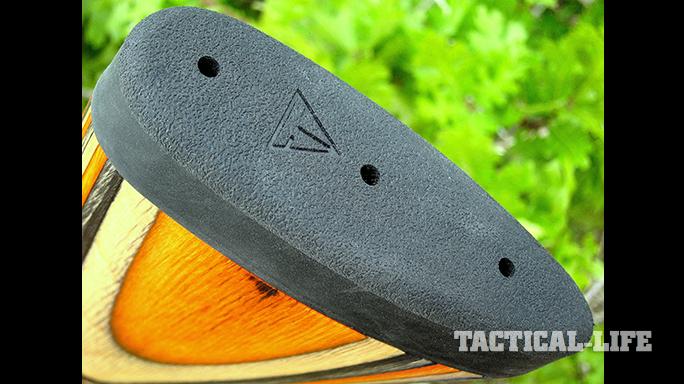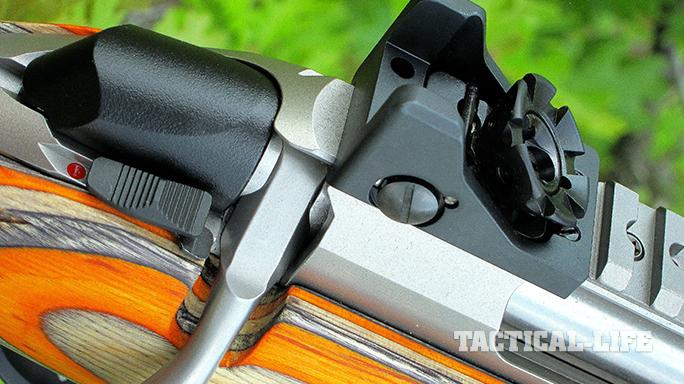The quasi-military Canadian Rangers are entirely unique to the North American continent, tracing their history back to the WWII Pacific Coast Militia Rangers (PCMR) formed on March 3, 1942. The 15,000-man, all-volunteer PCMR was organized to patrol and defend the coastline of British Columbia and certain other sections of Canada against a possible Japanese invasion expected at the time, and it was disbanded at the end of the war on September 30, 1945. But, recognizing that some sort of a military presence was still needed in the remote interior, the 5,000-member Canadian Rangers were officially established on May 23, 1947, as a component of the Canadian Armed Forces Reserve.
Today’s Rangers, still volunteers, are split between five Patrol Groups that span some of the most remote and sparsely settled terrain the nation above our northern border has to offer, and the composition of each unit reflects the populations it serves. The ethnic makeup of Ranger patrols varies with geography; some are entirely First Nation, some are mixed and some are all white, depending on the inhabitants of the areas they draw from.
The mission of the Rangers is primarily to conduct surveillance or sovereign patrols as needed, but duties, either official or as-indicated, include search and rescue operations, firefighting, flood control, inspections of North Warning System sites, and wilderness survival training and coordination with other military units when in their area. Loosely considered “on duty” at all times in their normal lives, the Rangers are only paid when called to active duty. The Canadian government provides certain limited equipment for support use by each ranger, and that includes largely basic camp gear. And a rifle.
Advertisement — Continue Reading Below
The Old Rifle
Until recently, the rifle issued to Ranger units had remained unchanged since 1941: the venerable bolt- action, 10-shot Lee-Enfield No. 4 Mk I in .303 British. When the original PCMR was first organized, the Enfield was the standard battle rifle of Canadian forces, and the Rangers got what the regulars got. For some reason only the authorities up north can explain, time froze for the Rangers in 1941 in terms of issued ordnance. While the Canadian full-time professional armed forces advanced along with the rest of the world into more modern semi-auto battle rifle designs, the Rangers trundled on with their dependable but long-outdated bolt guns.
- RELATED STORY: 12 Classic & Contemporary Bolt-Action Rifles Worth Your Time
Not to say that the Enfield was a bad choice. In 1941, it was one of the best combat rifles fielded by any nation participating in World War II, and had proven itself in the field with successive generations of development going back to 1895, remaining in service for the British Empire until it was replaced by the semi-auto L1A1 in 1957. A very rugged design, the Enfield in No 4. Mk I form featured a 25.2-inch barrel and weighed 9.6 pounds with a detachable 10-round magazine, a large swiveling safety lever positioned at the left upper rear of the action, a simple rear aperture sight, and a front sight post situated between two very sturdy protective “ears.” With a cock-on-closing action, the rifle was accurate, well built and powerful enough in caliber and construction to handle some of the coldest and harshest conditions Canada has to offer.
The Enfield had been a trusted partner for generations of Rangers, literally being handed down from ranger to ranger, issued and re-issued over the years. In rough terrain and weather conditions that would destroy many commercial rifles, or shut down a semi-auto completely, the “Ol’ .303” soldiered on long past any reasonable expectation when first fielded 76 years ago. But Enfield production ended in the mid-1950s, and so did spare parts to keep them running. Military stockpiles of small parts have been steadily dwindling. Rifles in service were becoming progressively harder to keep in service, and eventually that reality had to be faced. The time to move on had come.
Advertisement — Continue Reading Below
Coming To America
Committees were formed, input was requested, concepts were finalized, and in 2011 a determination was made. The new rifle would be a bolt action, once again deemed most suitable for the types of terrain Rangers face. The idea of a 10-round detachable magazine was carried over, but the .303 caliber was not. The new Ranger rifle was to be built by Colt Canada in .308 Winchester/7.62mm NATO and issued by 2015. But the project was halted almost immediately, and finally resurrected in 2014, with a candidate competition in 2015.
The winner, to be manufactured by Colt Canada under license from SAKO, was based on the Finnish Tikka T3 Compact Tactical Rifle. The new gun was to be built in stainless steel with a laminated stock, an oversized triggerguard and a bolt handle to accommodate use with gloved hands. A Canadian government source has declared an intention buy 6,820 rifles. With accessories and 2 million rounds of ammunition, the project was expected to cost $28 million in Canadian dollars.
Back in 2015, as all of this was going on, I thought the concept was intriguing. Living in Utah with distinct seasonal variations, differing elevations and extremes that can run the gamut from 115-degree dry-desert temperatures to high-altitude snowpacks at -20, I hopefully asked Colt USA if there was any chance of the Ranger rifle being produced on our side of the border. The answer was a definite “no,” and it was mostly forgotten until I stopped in at the Beretta booth at this year’s SHOT Show in January. One of the most interesting products I saw on display was the brand-new Tikka T3x Arctic. Finally available for the U.S. market, this is the civilian version of the new Canadian Ranger rifle.
Advertisement — Continue Reading Below
Arctic Heart & Soul
Actually, this T3x Arctic differs from the military version in two key areas. It’s entirely made in Finland by SAKO, and its weather- and warp-resistant laminated birch stock is orange instead of red. Other than that, it’s the Ranger rifle in heart, soul and features.
Made of matte stainless steel to tackle rain, snow, ice, canoes and kayaks, the free-floating, 20-inch, hammer-forged, 416 stainless, medium-contour barrel uses a 1-in-11-inch twist rate. A push-feed action with a right-side ejection port and a three-position safety combines with a staggered 10-round, steel, detachable box magazine with a polymer base to keep it fed. The large, serrated, ambidextrous magazine release is positioned directly behind the magazine well as a movable component of the black aluminum alloy triggerguard assembly that contains a two-stage trigger. The bolt comes with an oversized, glove-friendly handle, and the bolt release/removal lever sits on the left side of the receiver below the rear sight.
The stock is oil finished and checkered at the wrist and forend, with sling swivel studs furnished as standard equipment. The rifle ships with three dark aluminum length-of-pull spacers and a solid but pliable black recoil pad with rounded a heel and toe. Two screwdrivers and a set of steel sling swivels also ship with the rifle.
Advertisement — Continue Reading Below
Sights & Safety
These deserve their own commentary. Up front, a hefty steel clamp-on base houses a black steel post inside a pair of sturdy protective “ears,” similar to the Enfield’s configuration. The post can be used to fine-tune elevation, but primary elevation and all windage adjustments are done with the rear sight’s “crown” aperture system.
The instruction manual doesn’t refer to it as a crown, but I will here because that’s what it looks like. Mounted on a removable base that in turn mounts to an integral rail milled into both sides of the upper receiver, the crown leans at a forward angle relative to the bore and incorporates an aperture in each of its six “tabs.” Each tab and aperture is calibrated for a specific distance, from 100 to 600 meters, with corresponding aperture size variations. Only the aperture tab at the rear is visible in aiming; the rotating crown locks into place on each aperture setting to avoid wandering. No tools are necessary for adjustments. The crown turns easily and quickly into any of the distance settings with the thumb and finger only, and another set of tall steel ears help protect the sight from impacts.
In short, this sighting setup is very practical, very easy to see, very easy to adjust quickly and very strong. If you prefer optics, a 4.75-inch section of stainless steel Picatinny rail comes already installed on the T3x Arctic.
Advertisement — Continue Reading Below
The safety is one more feature that deserves further discussion. What Tikka calls the three-position safety is actually two levers. The main lever is a pretty ordinary back-to-safe-and-forward-to-fire proposition. It can only be applied when the rifle is cocked, locking the bolt closed as well as the trigger, firing pin and sear. The smaller secondary lever is used to override the locked bolt, letting you open the action with the safety still engaged to unload a chambered round.
Cold Meets Hot
On a 91-degree day, I ran four different commercial loads through the T3x Arctic off a rest at a black bullseye 100 yards away. Tikka guarantees “a minimum performance of 1 MOA or better at 100 meters with three cartridges” in its well-written manual, but I couldn’t manage to pull it off. In fairness to the rifle, I can take most of the responsibility for that, with about 10-percent going to variable overcast lighting and winds ranging from 5 to 14 mph during the test session.
The aperture sizes vary on the crown, as mentioned, with the largest one being the 100-meter setting. I started out there to get on paper quickly without having to burn both time and ammunition in matching up the front sight to a smaller rear aperture at a 200- or 300-yard setting. Even though that 100-meter aperture turned out to be too big for my eyes, I stayed with it for the rest of the session for consistency’s sake.
Advertisement — Continue Reading Below
Don’t be misled by the group sizes in the chart. The rifle’s sighting system has enough flexibility to stay with that large 100-meter aperture for perfectly adequate hunting accuracy at relatively close distances, or create a just-for-you mating of preferred load and combination of smaller aperture and front post elevation to put a bullet where you want it with tighter groups farther out. I have no doubt whatsoever that I could have tightened up my groups considerably if I’d used a smaller aperture, and there’s always that Picatinny rail for glass if you want to go that route.
Otherwise, right out of the box with no additional lube, the action had one of the smoothest bolts I’ve ever worked with. The oversized handle was very easy to grasp, and the trigger broke at a very clean 3.25 pounds. By the way, don’t excessively dry-fire this Tikka; the factory recommends snap caps if you plan on doing that on a regular basis.
- RELATED STORY: Britain’s Battle Rifle – Lee-Enfield No. 4 Mk I
The 8.13-pound T3x Arctic’s recoil was light and comfortable thanks to the combined effects of the .308 Winchester caliber and the excellent recoil pad. I fired all of the test ammunition using the buttstock as it came, as it was a good fit for me with no spacers installed. But the ability to add to the length of pull could be a bonus feature for other shooters.
Advertisement — Continue Reading Below
The Rangers up north will lose the stripper clip-loading capability of their Enfields. They’ll also lose the ability to top off with one or more single rounds. The Arctic’s magazine dictates a slide-in-from-the-front-under-the-mag-lips technique for cartridge loading, not a straight-down push between the mag lips. This means the magazine has to be removed for loading, as it’s physically impossible to load the mag through the side ejection port. The Tikka can, obviously, still be directly loaded through that port with a single round if a quick shot is needed after running it dry. Depending on which load the Canadian Rangers settle on, they won’t be losing much ballistic horsepower swapping the .303 for the .308, and ammo will be much easier to procure, at more reasonable prices, than the Enfield fodder. And the Rangers will be gaining a more compact package with the Tikka.
The T3x Arctic functioned smoothly, with the only two glitches being my fault. Twice, on chambering the first round from a newly inserted magazine with the 180-grain load, the rifle didn’t pick up the top cartridge because I hadn’t made sure the bolt was fully retracted. I can’t blame Tikka for that. Extraction was effortless. One advantage of the plunger ejector here, as opposed to a Mauser-style ejection system, is that empty cases jumped out 2 to 3 feet to the right even when the bolt was very lightly opened.
Stateside Sporter
While I’m not hugely in love with the orange stock, preferring something more subdued among the trees, it does make the T3x Arctic easier to spot if you happen to misplace it on an iceberg. I would remove the Picatinny rail if I were going to hold onto this one. It’s located at the natural balance point, and combined with the box magazine, it adds unnecessary girth, making hand carry difficult. Beyond those two minor issues, I like what this rifle offers, even aside from its association with the Canadian Rangers. The suggested retail price of the T3x Arctic is a fairly steep $2,199, but this is a quality package, and you’ll likely see it going for closer to $1,800 at local dealers.
Advertisement — Continue Reading Below
Tikka T3x Arctic Specs
| Caliber: 7.62mm NATO |
| Barrel: 20 inches |
| OA Length: 40 inches |
| Weight: 8.13 pounds (empty) |
| Grip: Birch laminate |
| Sights: Front post, aperture rear |
| Action: Bolt |
| Finish: Matte stainless |
| Capacity: 10+1 |
| MSRP: $2,199 |
Tikka T3x Arctic Performance
| Load | Accuracy* |
|---|---|
| Federal 180 Power-Shok SP | 2.13 |
| Hornady 165 Superformance GMX | 2.69 |
| Sig Sauer 168 Match OTM | 3.13 |
| Winchester 150 Power Max | 1.88 |
*Bullet weight measured in grains and accuracy in inches for best three-shot groups at 100 yards.
For more information, visit tikka.fi.
This article was originally published in “Tactical Weapons” November/December 2017. To order a copy and subscribe, visit outdoorgroupstore.com.
